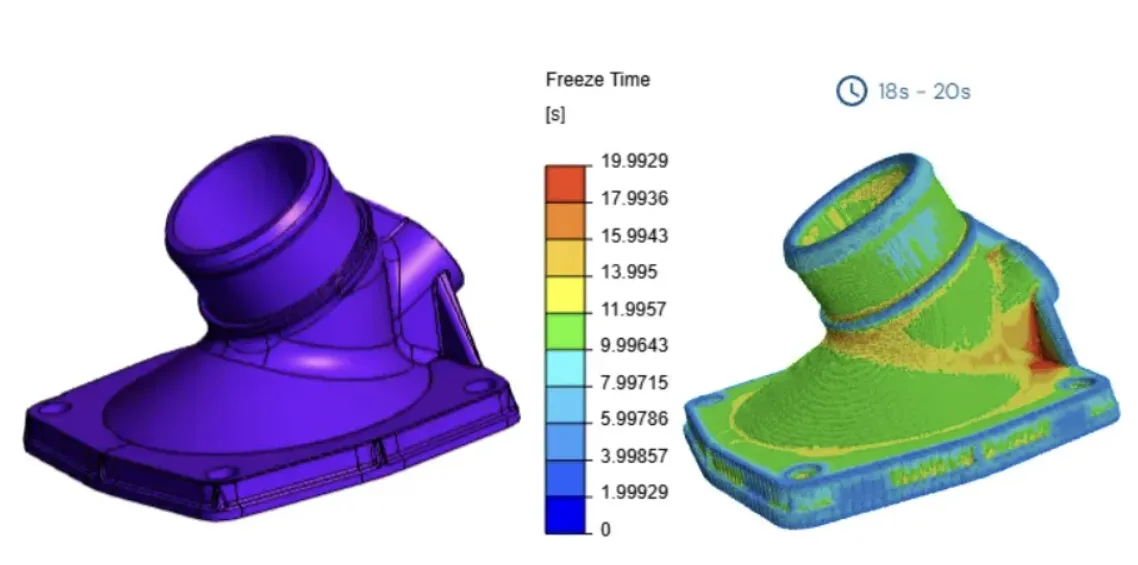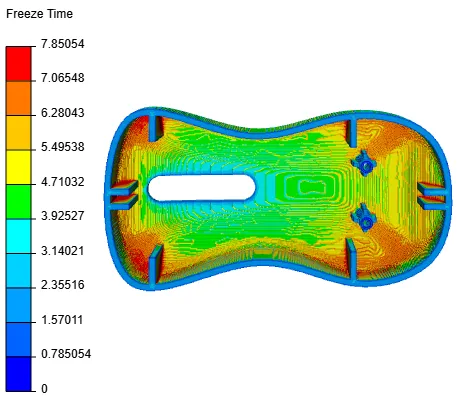by Chris Blake
Launching a new computer-aided engineering (CAE) injection molding simulation software tool like SimForm inevitably prompts the question: what’s the difference from products like Moldflow® by Autodesk, MoldEx3D, and others?
The market for moldflow analysis and molding simulation includes many software tools, each with their strengths and weaknesses. It’s a growing field, too. The increasing adoption of digital manufacturing technologies and a driving need to optimize plastic injection molding processes has fueled significant expansion in the moldflow analysis and molding simulation market (which is projected to reach $2.3B by 2030 with a CAGR of 8.5% from 2025-2030). So, too, have critical global challenges, including supply chain optimization, resource scarcity, and sustainability goals.
This post will address how SimForm positions itself among these other products—what it is and what it isn’t—and elucidate the unique role it can play within injection molding design workstreams. Most importantly, it describes how SimForm complements high-end specialized simulation software like Moldflow and MoldEx3D by providing distinct value to mold makers and their customers.
It’s not a replacement for advanced simulation software, nor is it trying to be. Instead, it gives users something they’ve been missing: quick, visual feedback on mold cooling behavior before finalizing a design. Early insights don’t slow down the process. On the contrary, they fit seamlessly into workflows where traditional simulation tools are often too slow, too complex, or too expensive to deploy at every stage.
Target customers
In fact, let’s start there: who should use SimForm? It’s natural to assume that as a molding simulation tool, SimForm would try to appeal to the people who already use moldflow software. But SimForm is not really for those who have advanced enough in their science to take advantage of CAE simulation software like Moldflow or MoldEx3D. Those are very precise simulation tools that work best on highly detailed molds, mostly for mold design validation near the end of the process.

Instead, SimForm was created for mold designers, tooling managers and other stakeholders without simulation expertise to help solve hot spots early in the design process. No training or certification is needed to use SimForm, which means that you don’t have to rely on a third party—in-house or outsourced—to complete costly simulations. The designer has the control needed to reduce turn-around time and costs in a more digital environment. The digitization of this process, in particular, is a critical advantage in attracting & retaining talent from the newest generation of designers.
It’s also ideal for smaller shops or OEMs that want to bring simulation capabilities in-house without the overhead of dedicated analysts or expensive licenses. Teams can more easily and quickly evaluate feasibility and cost drivers themselves, early in the process. This highly responsive level of control means there’s no delays waiting for outside analysts, which helps to head off late-game changes and ultimately improves project ROI.
Pricing and deployment model
Everything about SimForm makes it easy to adopt. Not only is it a cloud-based app, so there’s no need for costly computers or power workstations, but there’s also no up-front investment. In contrast to MoldEx3D and MoldFlow, which have licence purchase fees regardless of how much or how little they get used, SimForm’s pricing model is based on usage—a customer only pays when they use it.
Check out our pricing page for more information.
And in terms of usage, there are some other key differences that should be considered.
Solve time

MoldFlow and MoldEx3D typically take several hours to generate their results. SimForm, on the other hand, delivers feedback in less than 15 minutes. In other words, a designer can evaluate multiple different concepts within the same day, leveraging the scalability of the cloud.
We accomplish these incredible speeds because our solver technology runs on Graphical Processing Units (GPUs). Find out more on our comparison page.
Mold material
One final difference: Most moldflow simulations in CAE simulation software do not take into account the specific properties of the mold material, unless a top-tier license is purchased. By excluding this factor in lower level simulations, they run more quickly and are relatively more affordable to use. However, it also means those tools are not able to identify hot spots, nor can they guide injection mold cooling design. To be clear, that is not a shortcoming of other moldflow simulation tools, because that is not their intended use.

In contrast, SimForm considers by default the properties of the mold materials, which is vital to accurately simulating the thermal performance of early mold design concepts. The earlier in the design this is completed, the better.
Complementing mold flow CAE simulation software (not competing!)
As you can see, SimForm and advanced CAE simulation software tools like Moldflow and MoldEx3D solve very different problems. Moldflow, and similar solutions, are ideal for final validation of mold designs and detecting very advanced problems that even experienced designers would not see. While their simulations take more time and expense to use, customers trust them to produce highly accurate results.
SimForm looks at simulation through a different lens. Mold designers can use SimForm autonomously, without waiting for external support, to accelerate the design process and enable rapid concept iterations that inform their decisions. The goal is not to generate final validations with high accuracy, but faster feedback at low cost and with minimal expertise.
It’s a complementary tool that fills the gap between initial design and final analysis. By using SimForm early, teams reduce friction between departments, speed up approval processes, and catch cooling inefficiencies while it’s still easy to make changes. That saves both time and money—two things every design team values.
In this way, SimForm works alongside more advanced moldflow simulation tools to streamline and inform mold design early in the process. Optimizing designs with an injection molding simulation software like SimForm alleviates significant risk of only identifying issues at later verification phases, and can help designers create more cost-effective molds through rapid simulations and iteration.
Learn more
To experience for yourself what makes SimForm a valuable component of your mold design simulation toolkit, sign up for a free trial or book a demo today.